VERY RARE! WWII 1944 Operation Reckless Task Force Sentani Drome - New Guinea "SPECIAL INVASION MAP" Assault on Hollandia and Sentani Airfields



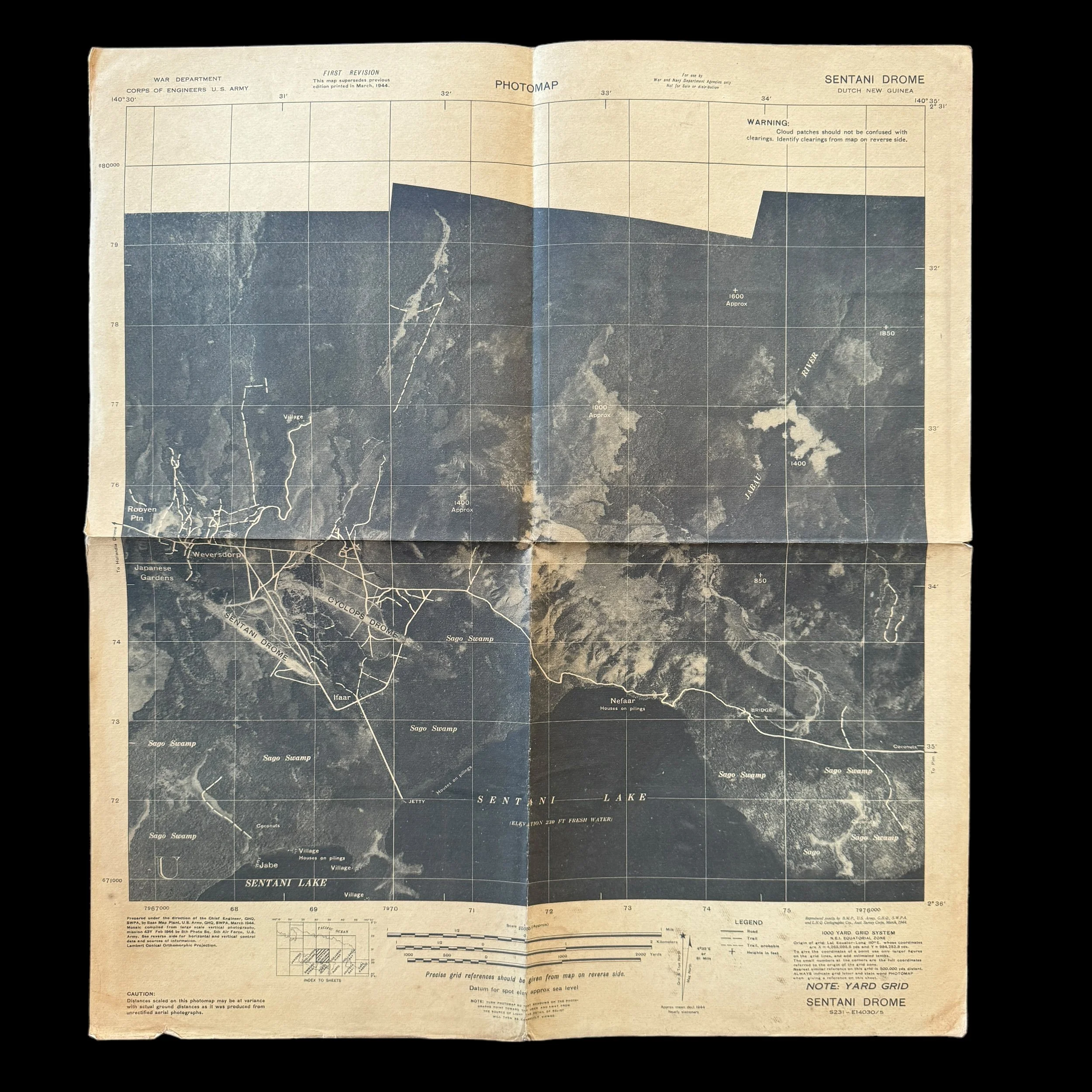



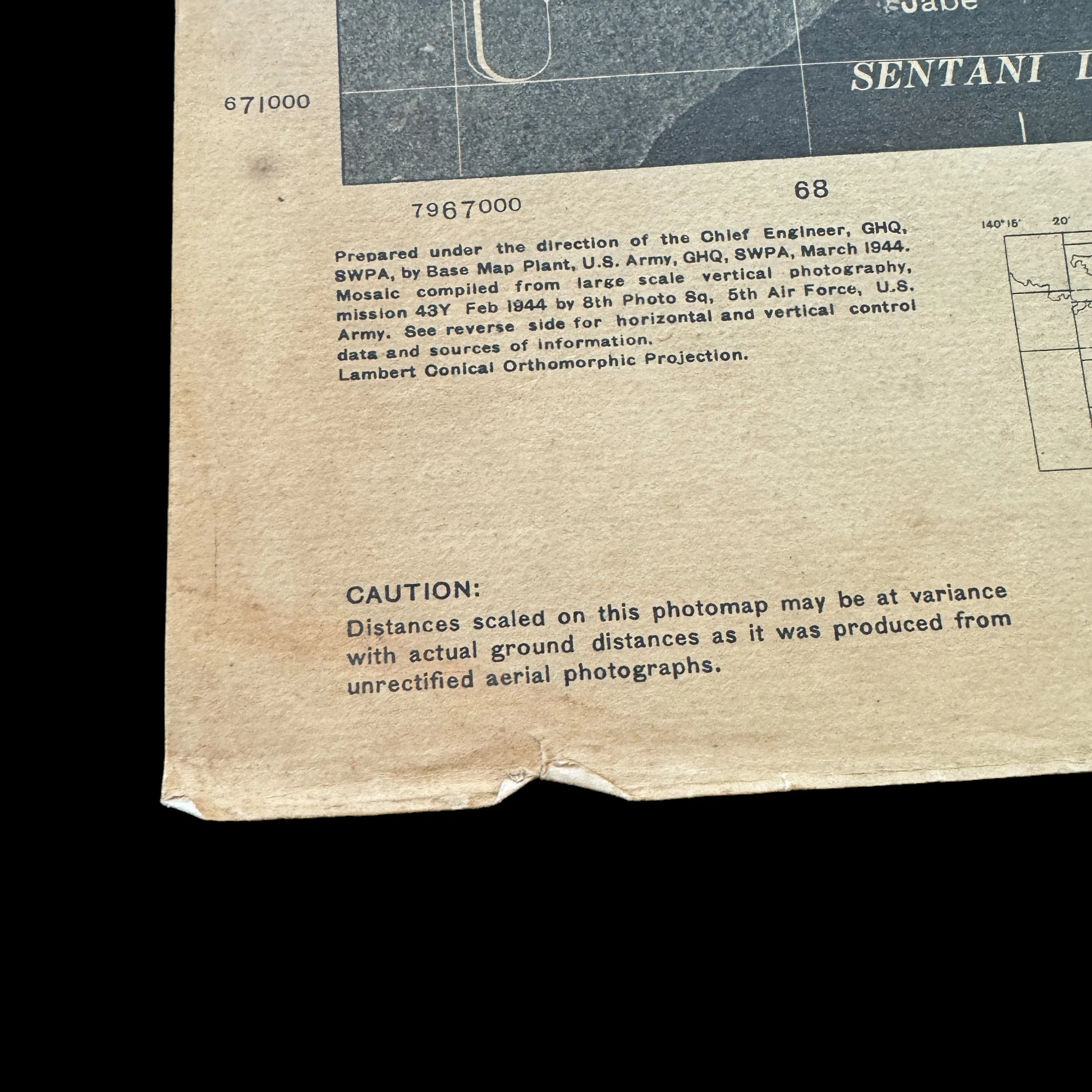
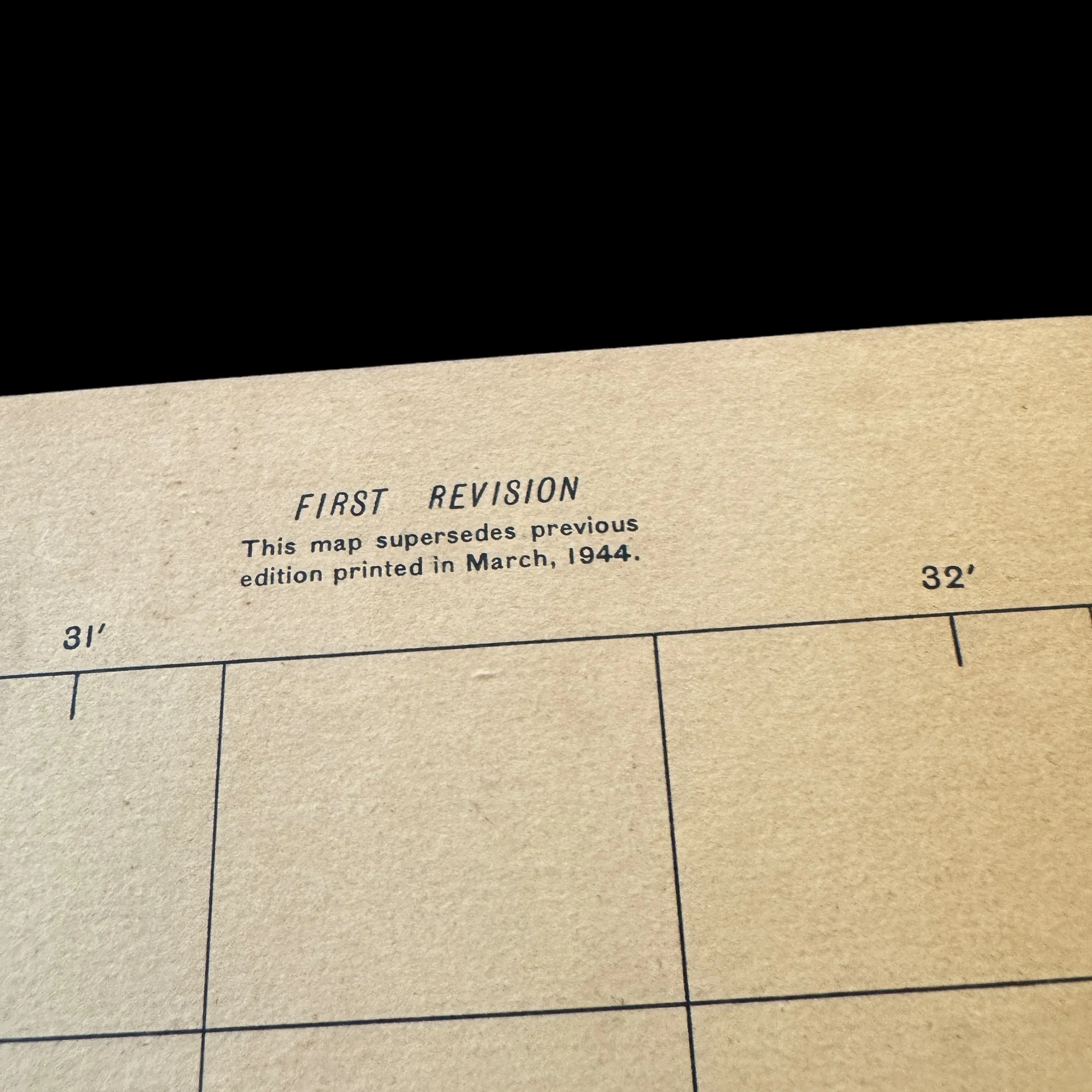
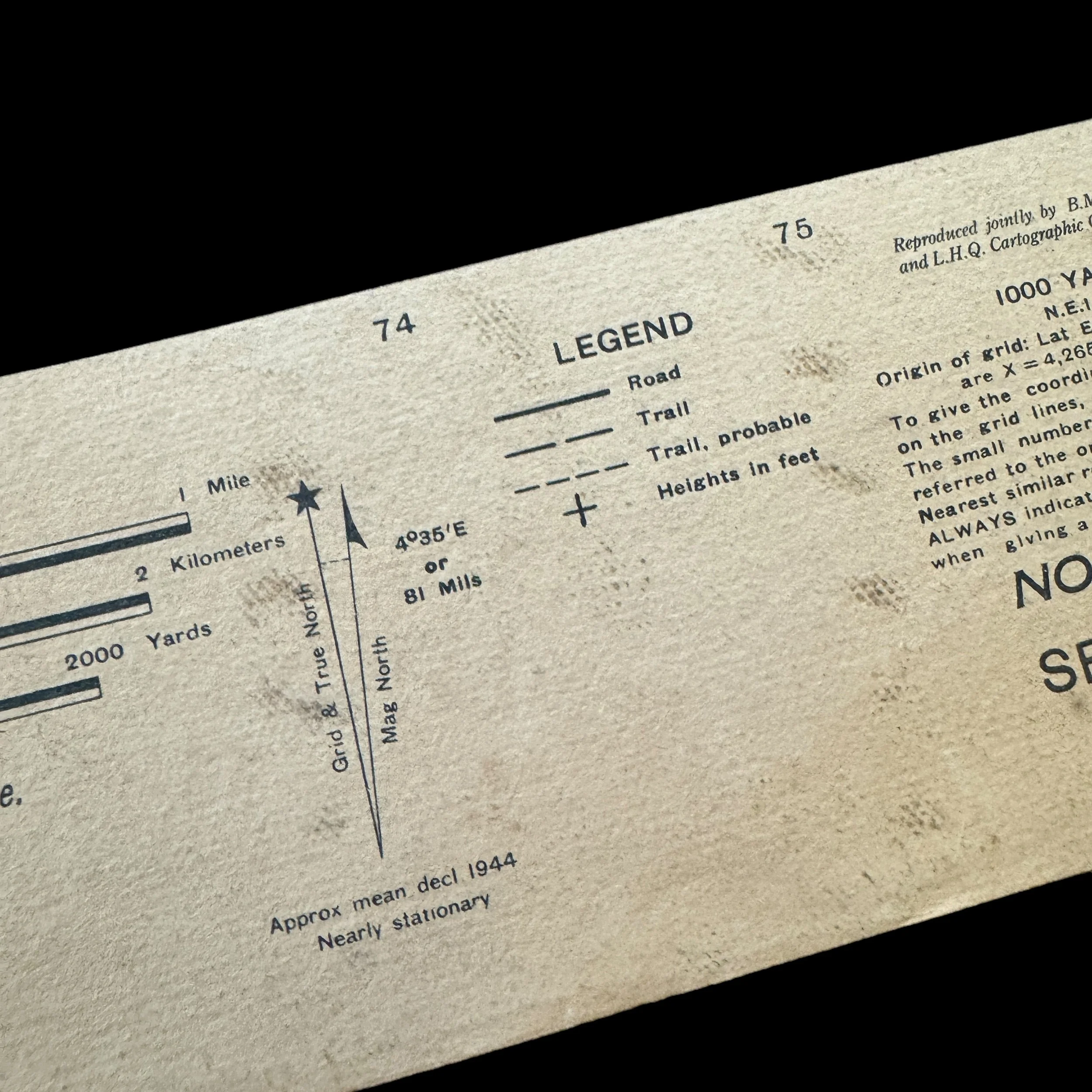



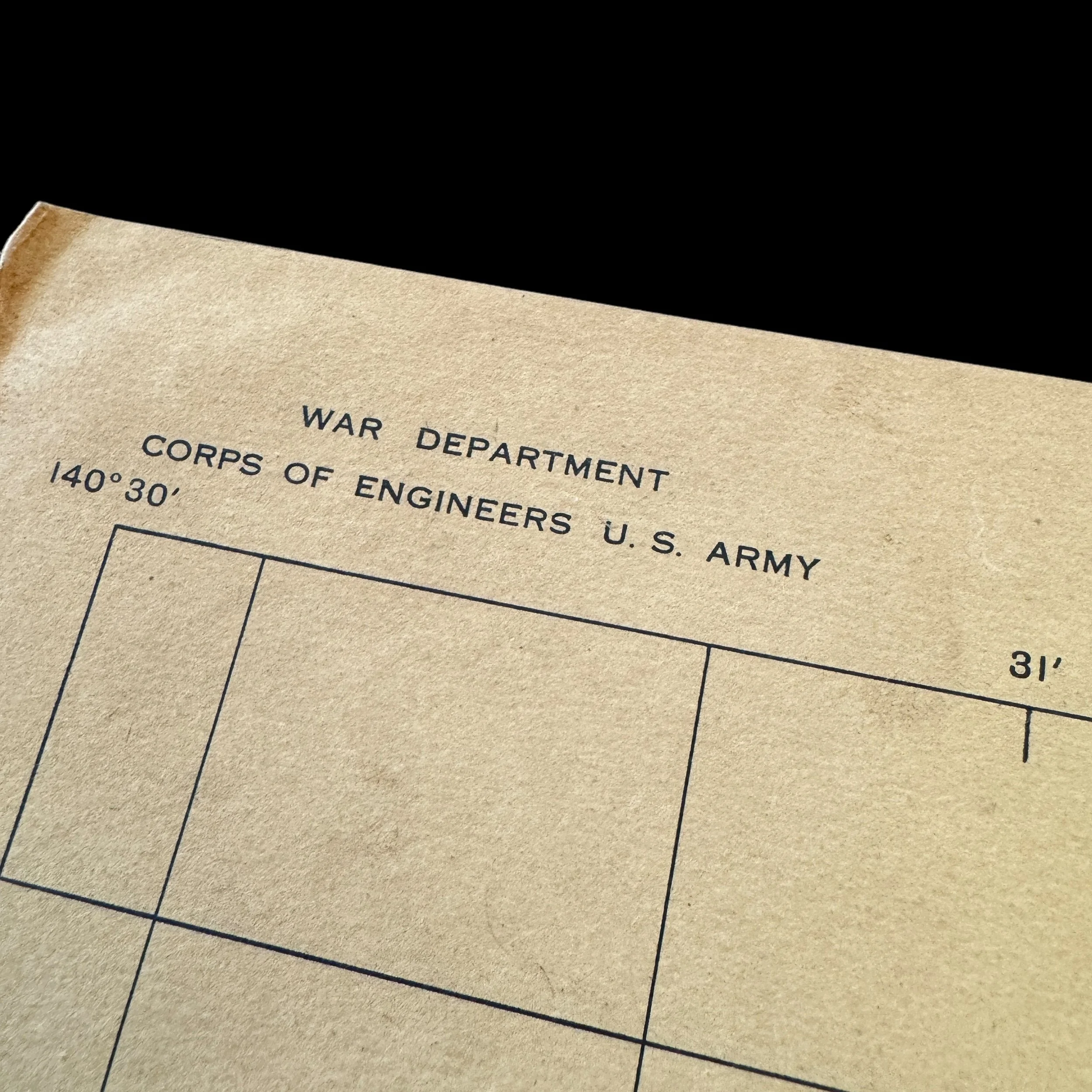

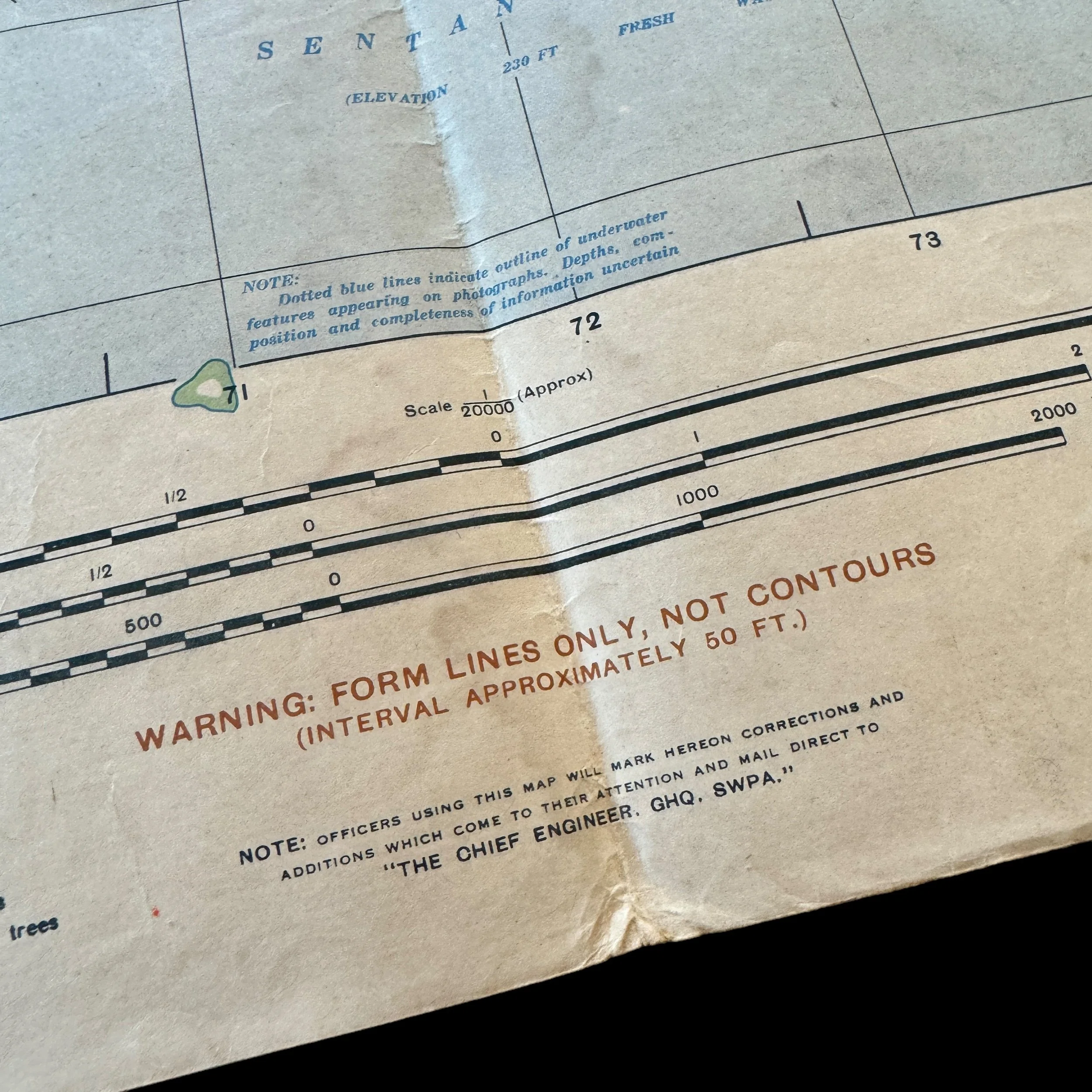





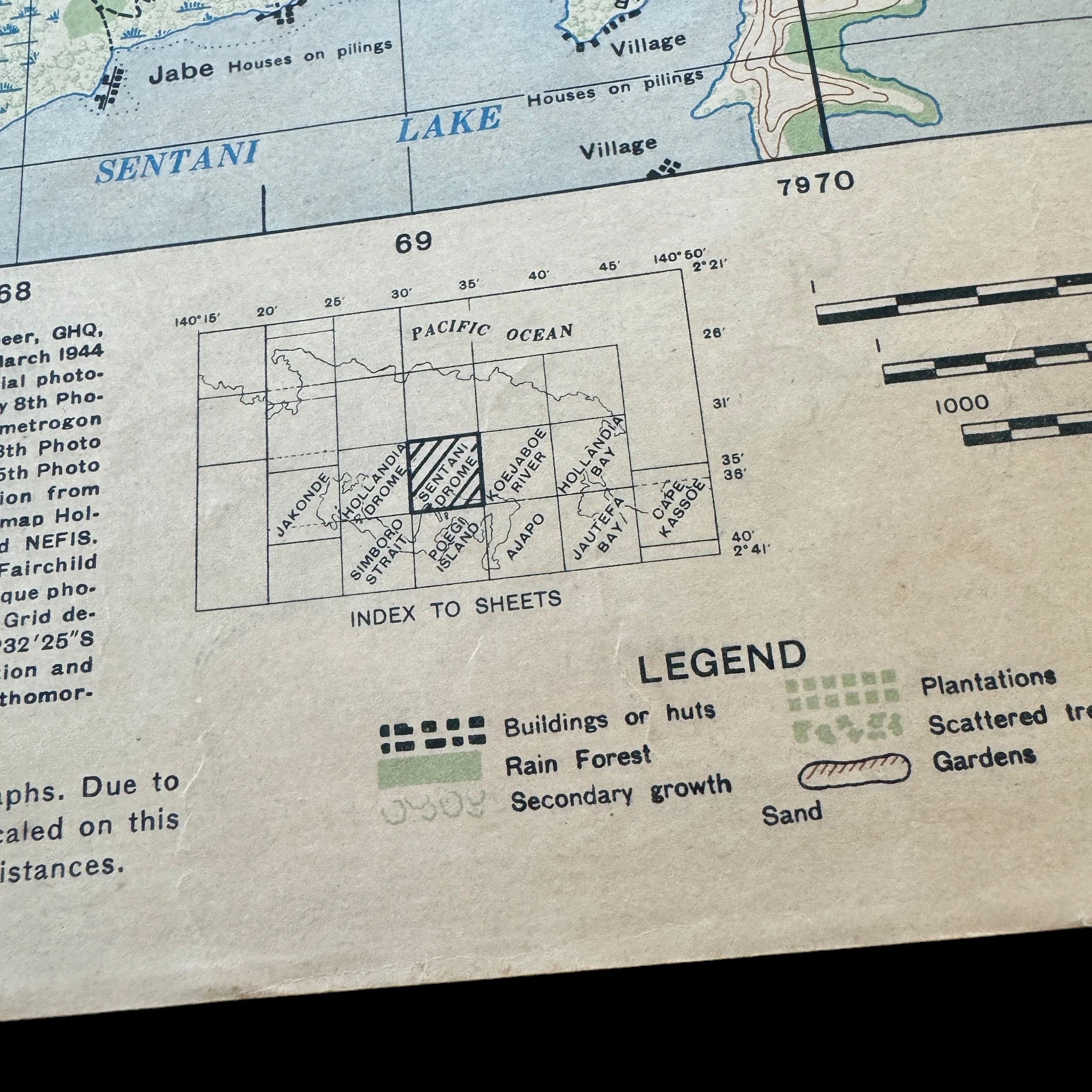




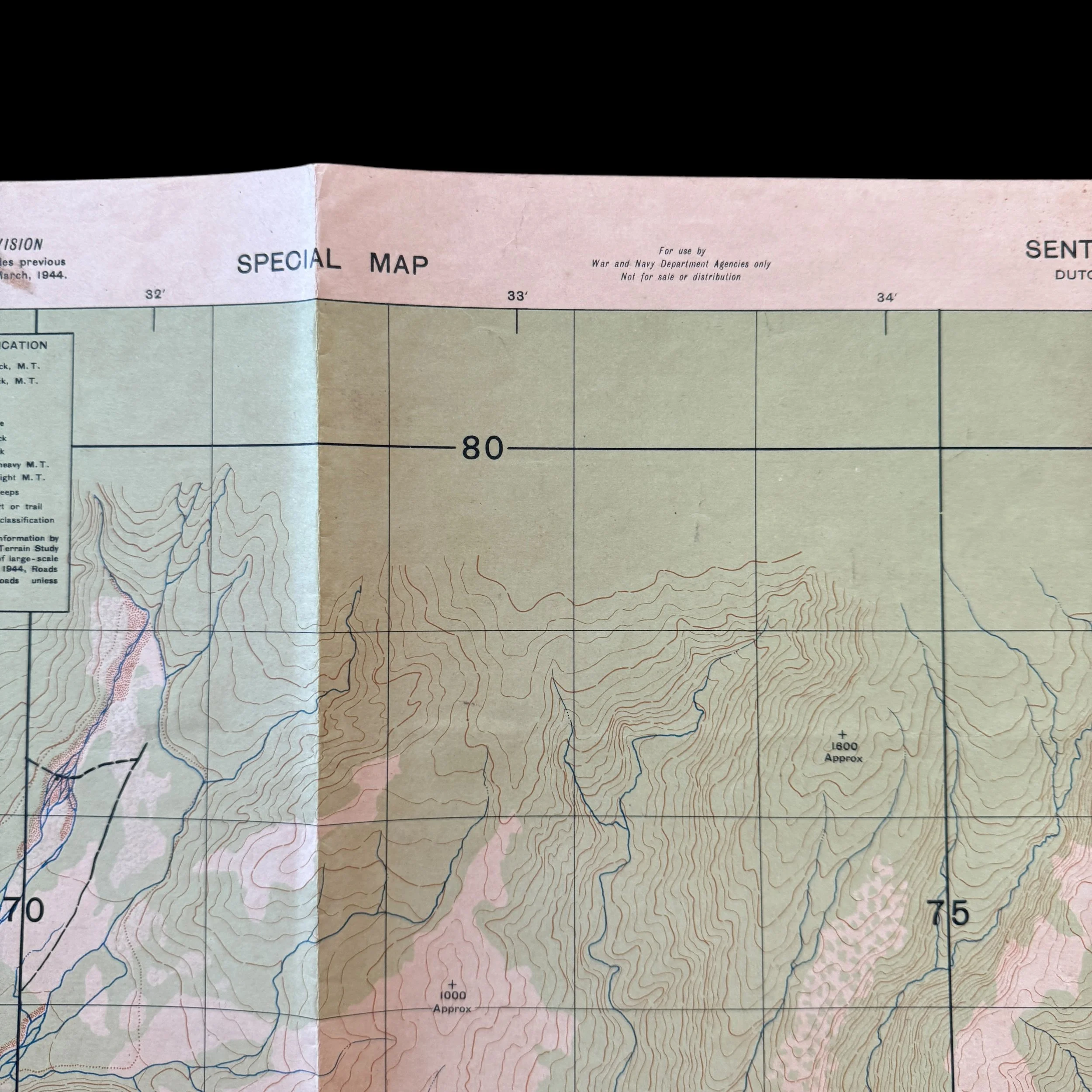


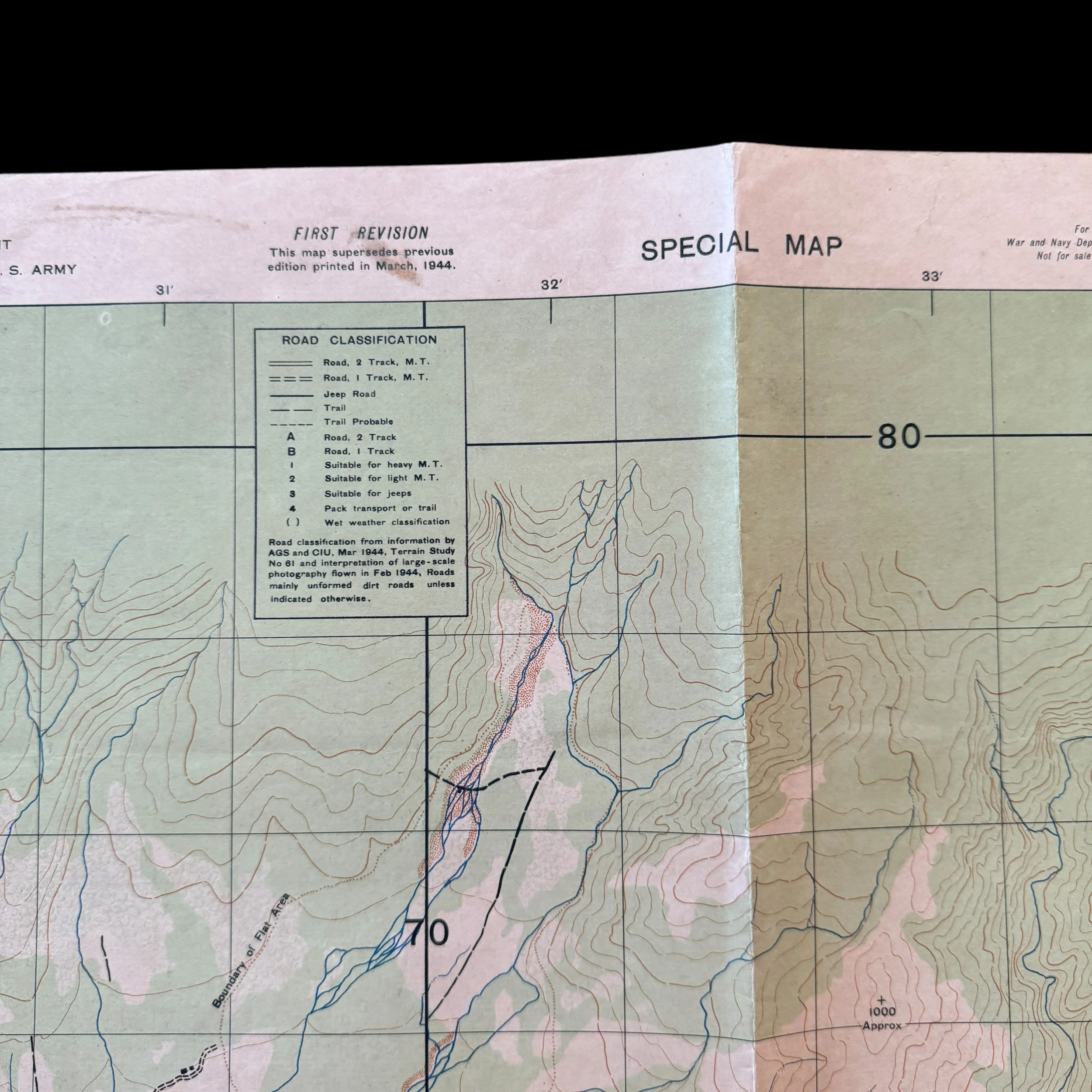

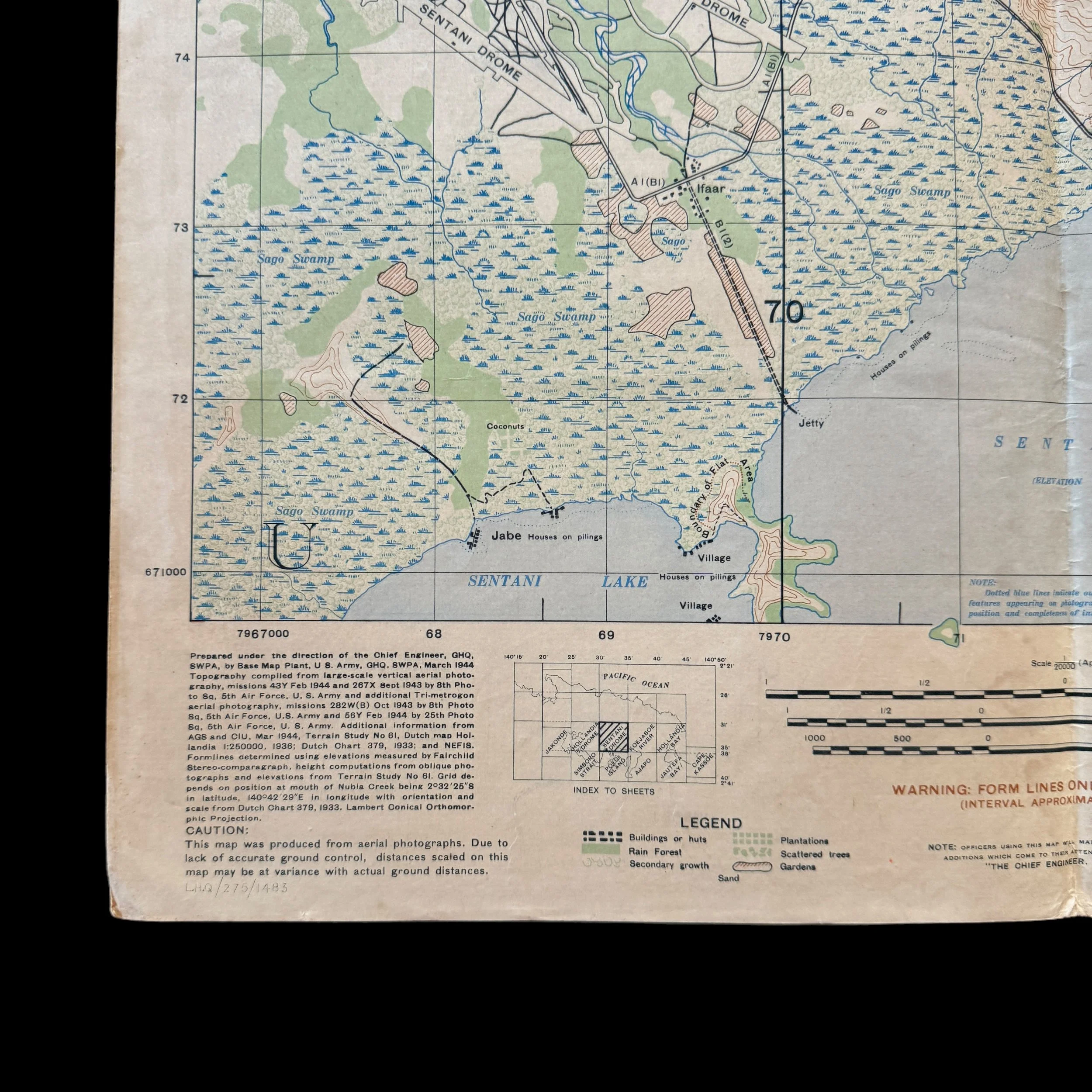
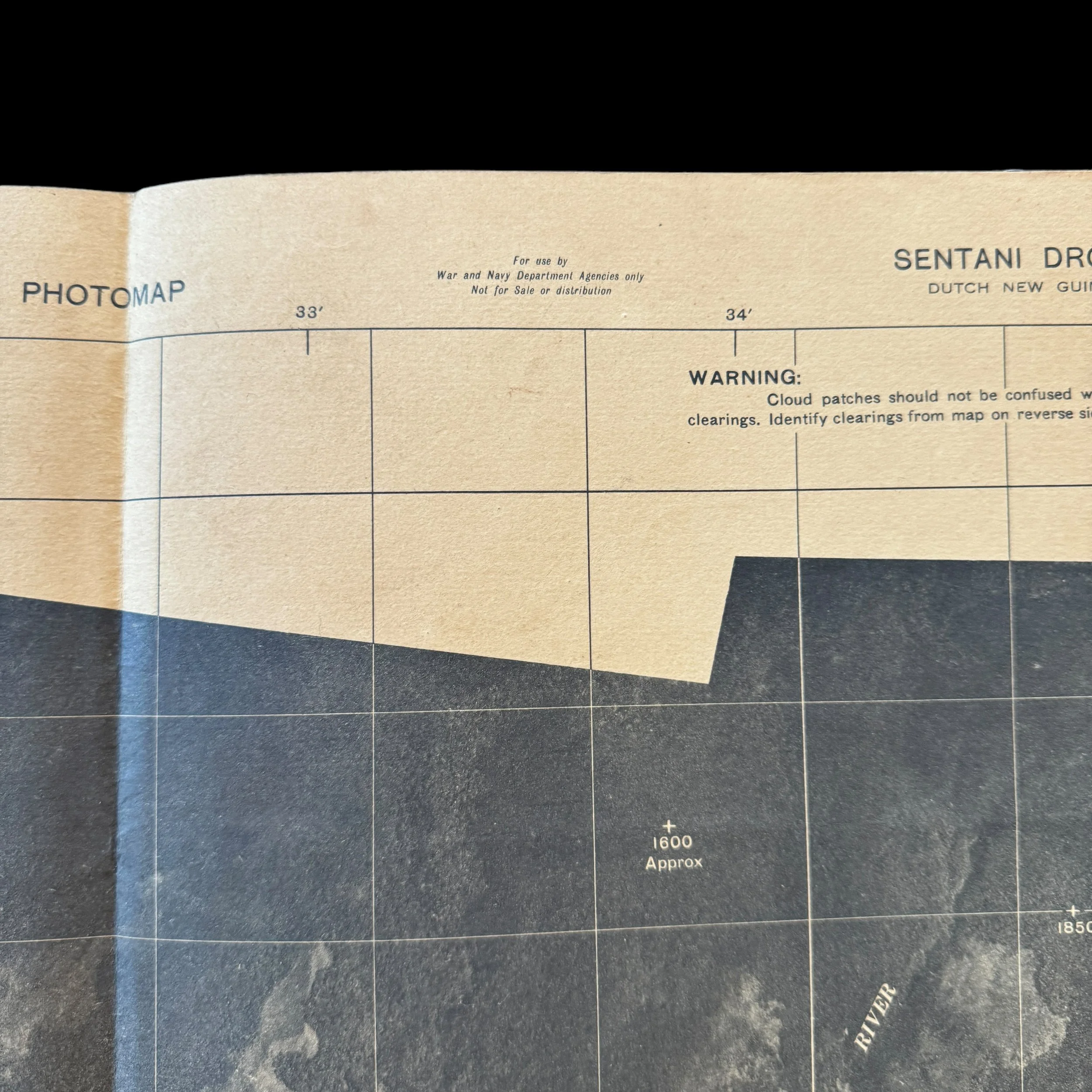


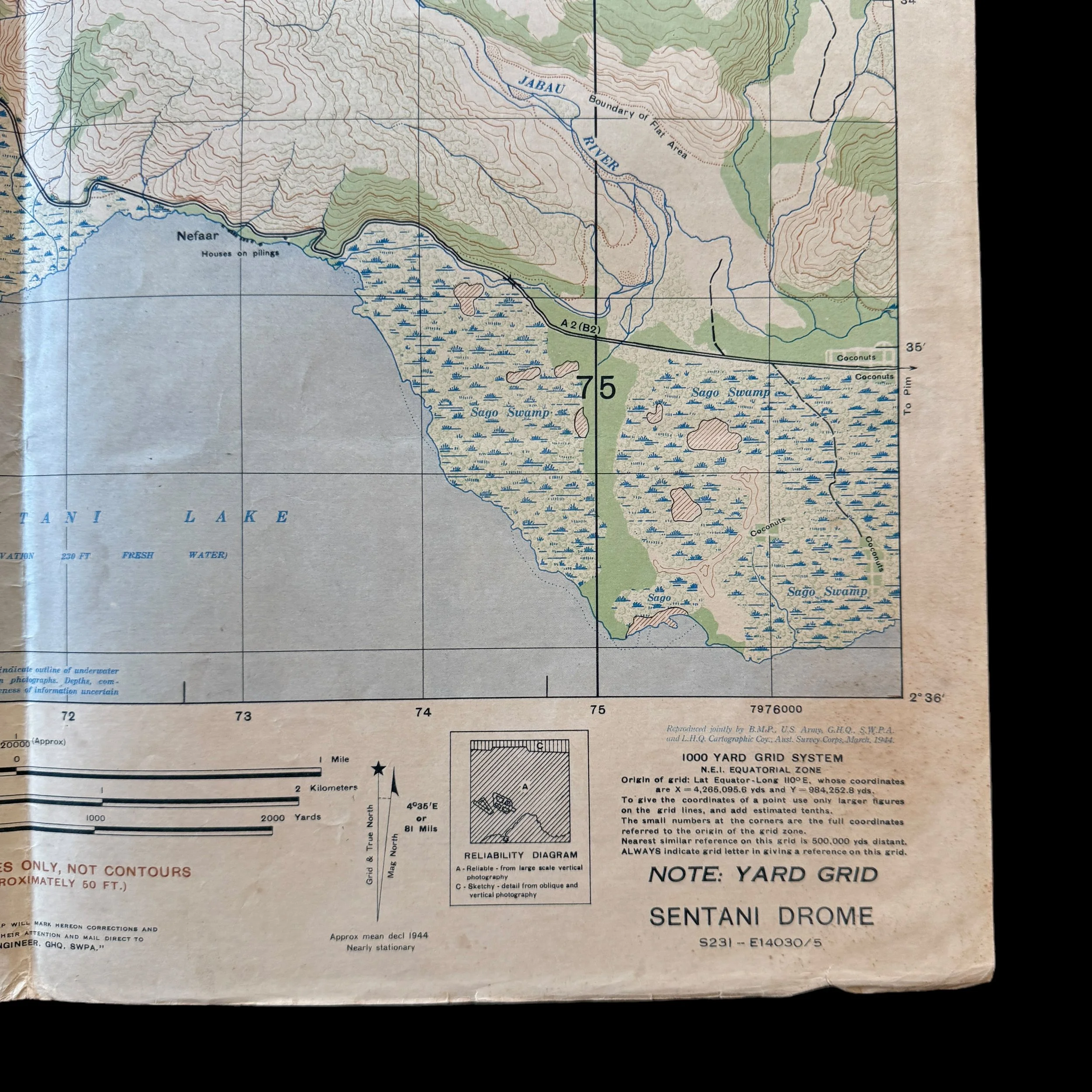
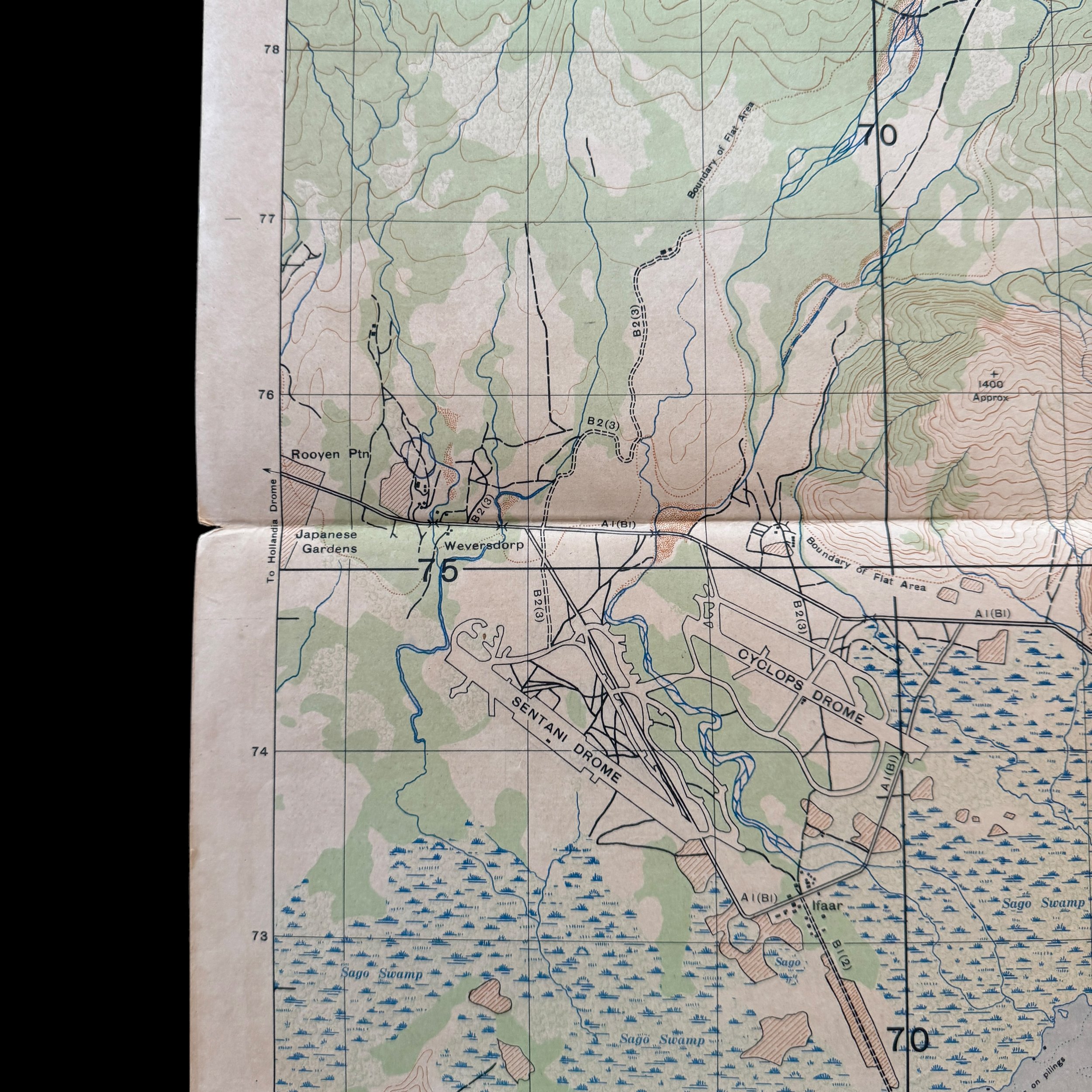







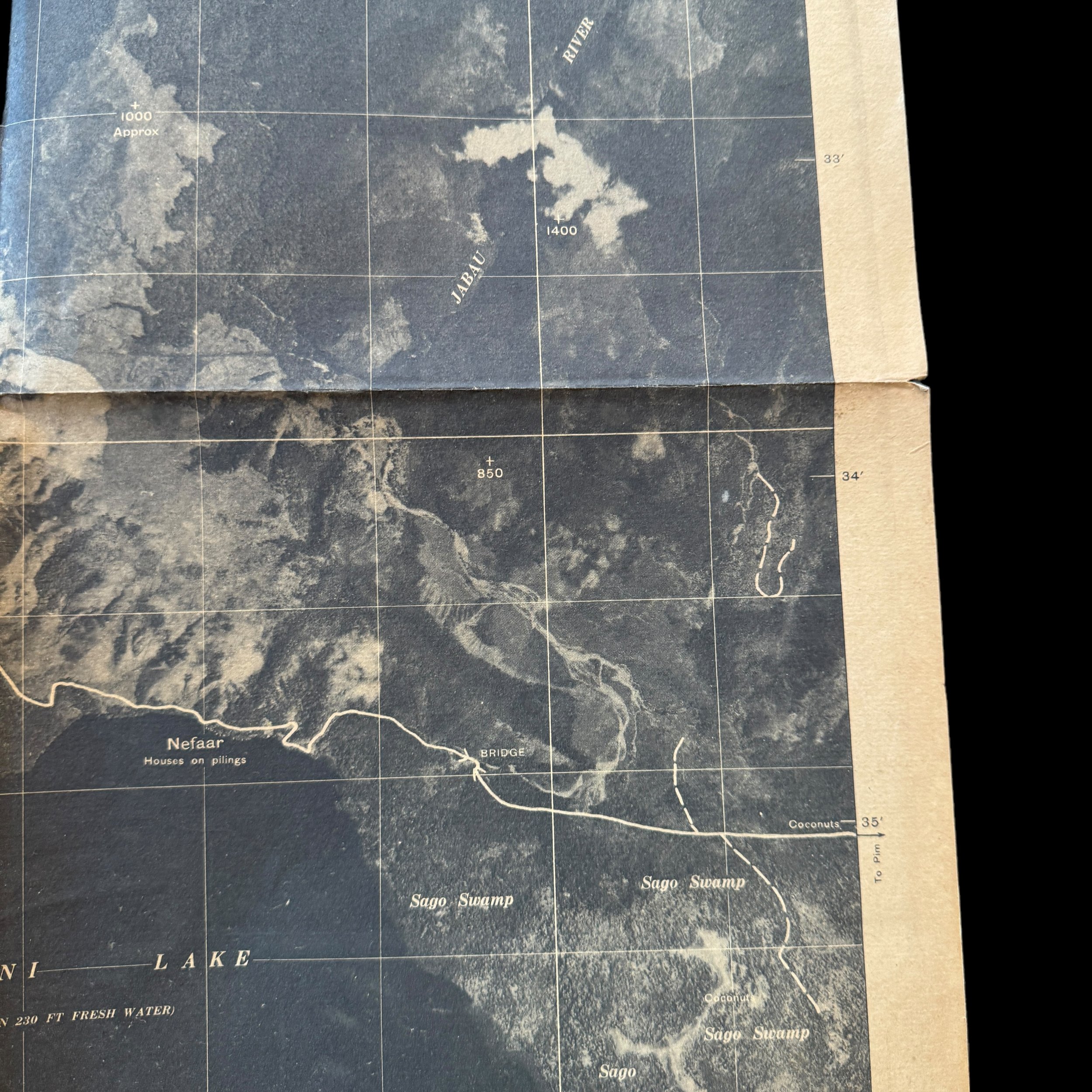
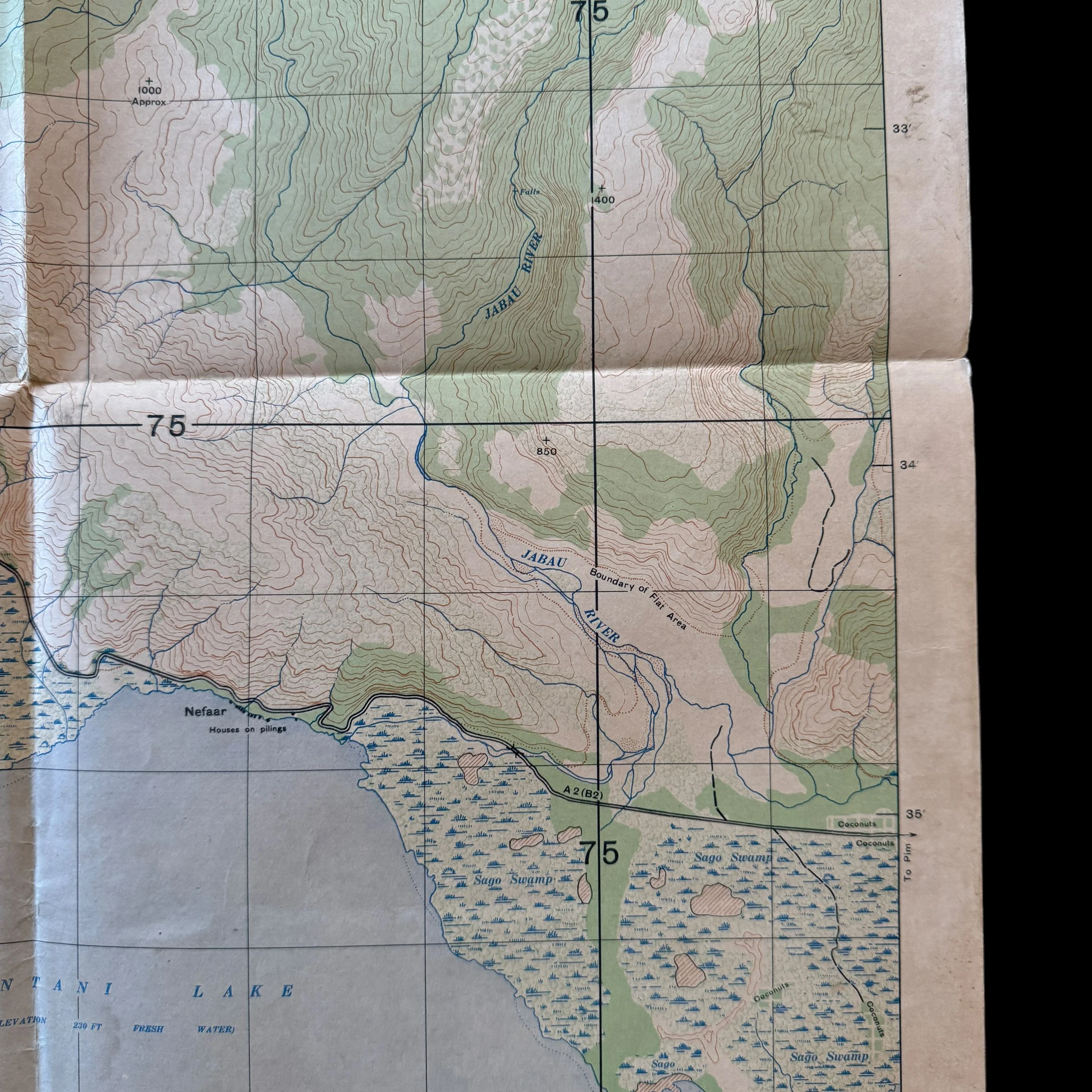


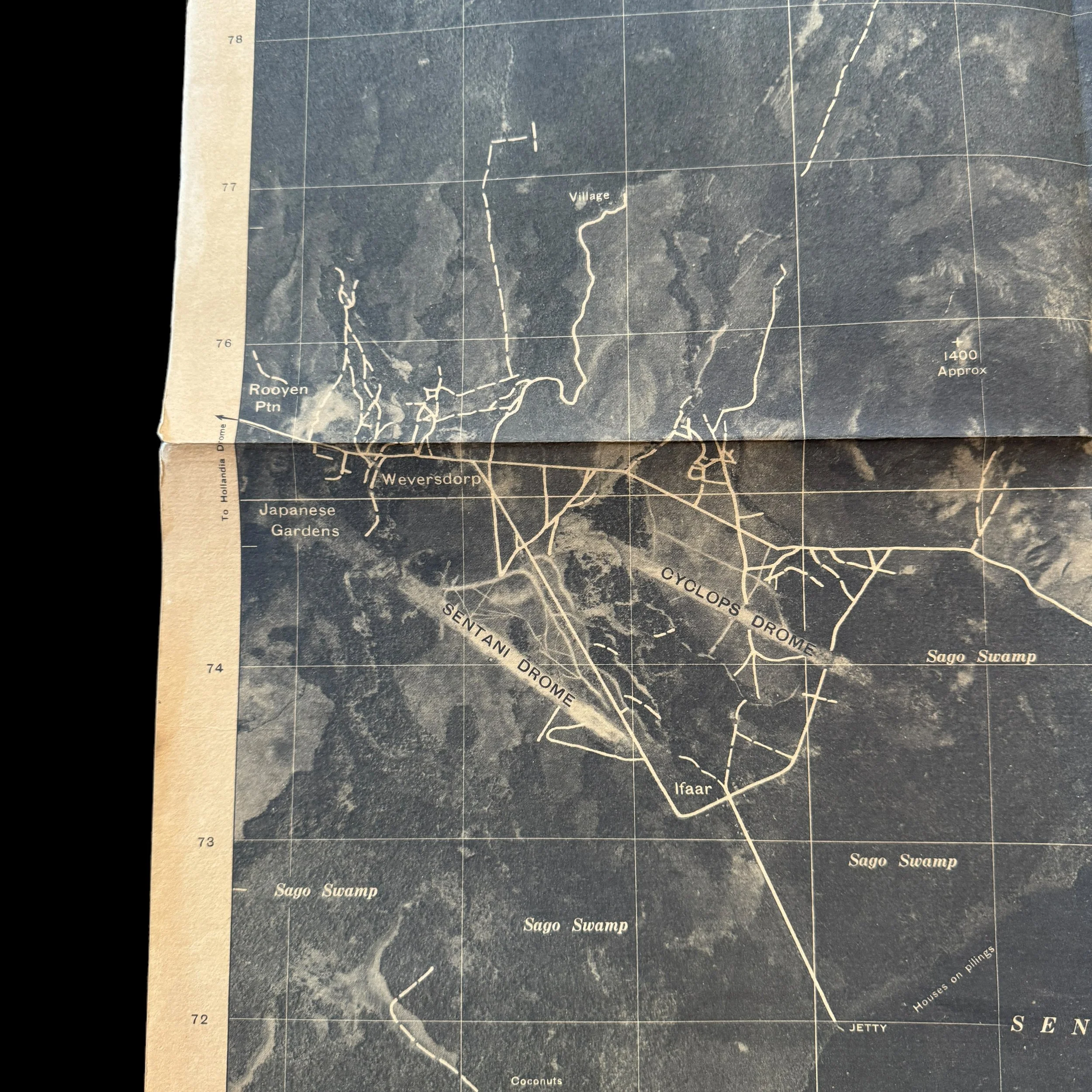









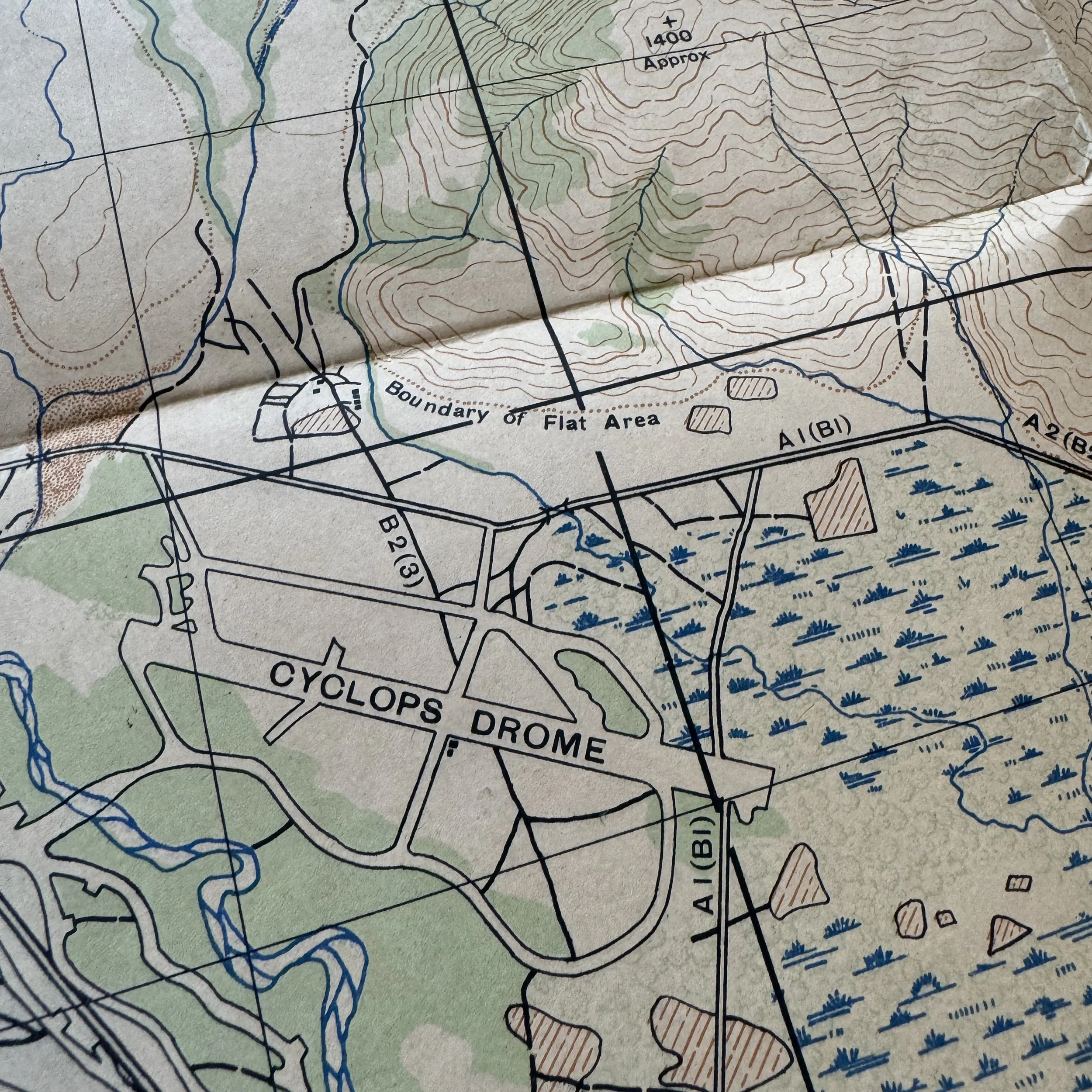



VERY RARE! WWII 1944 Operation Reckless Task Force Sentani Drome - New Guinea "SPECIAL INVASION MAP" Assault on Hollandia and Sentani Airfields
Comes with a hand-signed C.O.A.
Size: 20 x 22 inches
This incredibly rare and museum-grade WWII artifact is an original and heavily used 1944 dated combat operations map used during Operation Reckless and the Allied Campaign in Hollandia and Sentani, New Guinea (Pacific Theater). What makes this New Guinea invasion map so rare is that this was printed in March 1944 (one month before the Operation Reckless D-Day landing assault on the Hollandia area in April 1944. Prepared under the direction of the Chief Engineer this extremely rare double-side Hollandia New Guinea amphibious invasion map and rare ‘AERIAL SUPPORT PHOTO’ map was used in support of the Operation Reckless Task Force assault on the Japanese held airfields around the Hollandia Airfield and Sentani Airfield. The U.S. 8th Photo Squadron, 5th Air Force constructed this map from large-scale vertical area photograph missions. This “SPECIAL MAP” print also features a rare ‘PHOTO MAP’ on the backside showing a realistic view of the New Guinea terrain. These backside special ‘PHOTO MAPS’ are not common and are generally reserved for special divisions and operations.
Operation Reckless: A Strategic Masterstroke in the Pacific War
World War II, with its vast and varied theaters, presented complex challenges that required innovative strategies. Among these, Operation Reckless stands out as a pivotal campaign in the Pacific theater, marking a decisive turn in the Allied efforts to regain control from Japanese forces. This operation, aimed at capturing Hollandia and the Sentani Dromes in New Guinea, was a meticulously planned and executed maneuver that showcased the Allies' growing strategic acumen and logistical capabilities.
Background and Strategic Importance
By early 1944, the Allies had recognized the necessity of securing New Guinea to facilitate further offensives in the Pacific. General Douglas MacArthur, the Supreme Commander of the Southwest Pacific Area, identified Hollandia, located on the north coast of New Guinea, as a critical target. Capturing Hollandia and its airfields—particularly the Sentani Drome—would provide the Allies with a strategic base to launch operations against the Japanese stronghold in the Philippines and beyond.
Hollandia's location was of immense strategic importance. It was relatively isolated from other Japanese bases, making it difficult for the Japanese to reinforce and resupply their troops stationed there. Furthermore, the area around Hollandia, including the Sentani Drome, offered favorable terrain for constructing and operating airfields, which were crucial for maintaining air superiority in the region.
Planning and Execution of Operation Reckless
Operation Reckless was meticulously planned under the direct supervision of General MacArthur. The plan called for simultaneous amphibious landings at Humboldt Bay and Tanahmerah Bay near Hollandia on April 22, 1944. These landings were designed to overwhelm the Japanese defenses quickly and secure the airfields at Hollandia and the nearby Sentani Drome.
The amphibious assault was spearheaded by the U.S. 24th and 41st Infantry Divisions, supported by naval and air bombardments. The element of surprise was critical to the success of the operation. To achieve this, the Allies conducted extensive reconnaissance and employed deception tactics to mislead the Japanese about the true target of the invasion.
The Assault on Hollandia and Sentani Drome
On the morning of April 22, 1944, the amphibious landings commenced. The U.S. forces quickly established beachheads at Humboldt Bay and Tanahmerah Bay. The Japanese defenders, caught off guard and inadequately prepared, offered only sporadic resistance. The swift and decisive actions of the Allied troops ensured that the initial objectives were achieved with minimal casualties.
Once the beachheads were secured, the focus shifted to capturing the airfields. The Sentani Drome, located near Lake Sentani and approximately 12 miles inland from Hollandia, was a primary target. The airfield at Sentani was of particular significance due to its size and capacity to accommodate a large number of aircraft, which would be instrumental in supporting subsequent operations in the Pacific.
The advance towards Sentani Drome was rapid and relentless. Allied forces encountered limited Japanese resistance as they moved inland, thanks in part to the effective preliminary bombardments and the confusion sown by the amphibious landings. By April 26, 1944, the Sentani Drome was firmly in Allied hands. The capture of the airfield marked a significant milestone in Operation Reckless, providing the Allies with a crucial logistical and operational base.
The Aftermath and Significance
The success of Operation Reckless had far-reaching implications for the Pacific War. The capture of Hollandia and the Sentani Drome not only deprived the Japanese of a vital base but also provided the Allies with a strategic foothold in New Guinea. The airfields at Sentani enabled the Allies to conduct sustained air operations against Japanese positions in the region, thereby facilitating further advances towards the Philippines and eventually Japan.
The operation also highlighted the effectiveness of Allied joint operations. The coordination between the U.S. Army, Navy, and Air Force was exemplary, demonstrating the increasing sophistication of Allied military planning and execution. The successful amphibious landings and rapid inland advances showcased the Allies' ability to conduct complex operations with precision and efficiency.
Moreover, the capture of the Sentani Drome underscored the importance of air power in modern warfare. Control of airfields like Sentani allowed the Allies to project power across vast distances, disrupting Japanese supply lines and communication networks. The ability to maintain air superiority was a decisive factor in the eventual Allied victory in the Pacific.
The Area of Sentani Drome
The Sentani Drome, located near Lake Sentani, was a key objective in Operation Reckless due to its strategic position and capacity to support extensive air operations. The area around the drome was characterized by dense jungle and rugged terrain, which presented significant logistical challenges. However, the Allies' meticulous planning and execution ensured that these obstacles were overcome swiftly.
The airfield itself was a large, open area that had been developed by the Japanese into a significant military installation. Capturing the Sentani Drome allowed the Allies to utilize this infrastructure to support their operations. The proximity to Lake Sentani also provided a valuable water source and facilitated transportation and supply routes.
In the broader context of the New Guinea campaign, the Sentani Drome served as a critical hub for Allied air operations. The airfield enabled the Allies to launch reconnaissance missions, provide close air support to ground forces, and conduct strategic bombing raids against Japanese positions. The control of Sentani Drome thus played a pivotal role in maintaining the momentum of the Allied advance through the Pacific.
Operation Reckless was a masterstroke of military strategy and execution, demonstrating the Allies' growing prowess in amphibious warfare and joint operations. The capture of Hollandia and the Sentani Drome not only provided a significant strategic advantage but also marked a turning point in the Pacific War. The success of the operation showcased the effectiveness of Allied planning and coordination, and underscored the critical importance of air power in modern warfare.
The area of the Sentani Drome, with its challenging terrain and strategic significance, symbolized the complexities and triumphs of Operation Reckless. The rapid capture and subsequent utilization of the airfield were testament to the Allies' ability to adapt and overcome the challenges of warfare in the Pacific. As a result, Operation Reckless remains a key chapter in the history of World War II, exemplifying the ingenuity, determination, and resilience of the Allied forces.